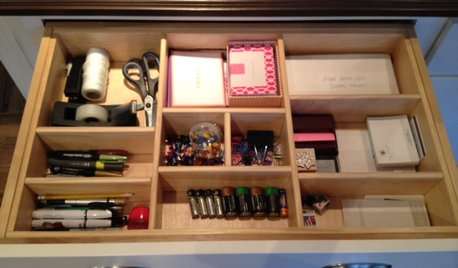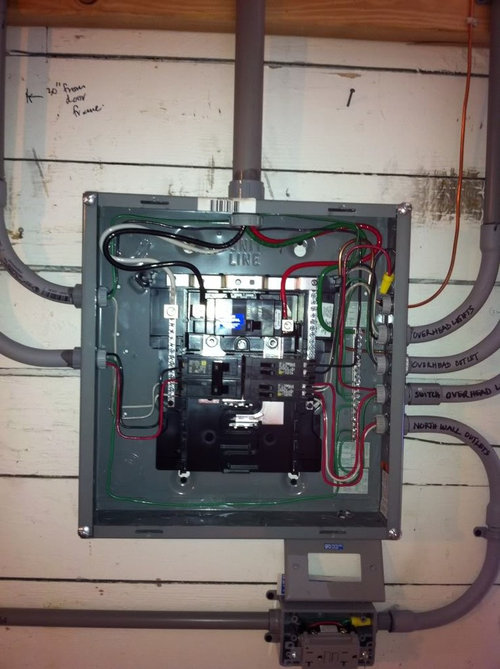Done Wiring Garage - What To Test?
John Liu
12 years ago
Related Stories

KITCHEN STORAGEGet It Done: How to Clean Out the Pantry
Crumbs, dust bunnies and old cocoa, beware — your pantry time is up
Full Story
HOUSEKEEPINGGet It Done: Store Decorations and Tidy Up Postholidays
Move on to New Year's with a clear conscience, knowing you've recycled thoughtfully and packed carefully to make setup next year easy
Full Story
MEDIA ROOMSGet It Done: Organize the Media Cabinet
Ditch the worn-out VHS tapes, save valuable storage space and find hidden gems with this quick weekend spruce-up
Full Story
MORE ROOMSHome Tech: Getting Rid of Wires Without Sacrificing Sound
Wireless home technology still isn't perfect, but new products are giving audiophiles choices
Full Story
KITCHEN DESIGNKitchen Islands: Pendant Lights Done Right
How many, how big, and how high? Tips for choosing kitchen pendant lights
Full Story
EXTERIORS8 Homes With Exterior Paint Colors Done Right
Get ideas for an exterior palette from these homes that run the gamut from Mediterranean to modern
Full Story
HOUSEKEEPINGGet It Done: Whip That Junk Drawer Into Shape
If the jumbled mess in your catch-all drawer inspires only dread, this quick organizing project is just the sort you need
Full Story
CLOSETSGet It Done: Attack the Coat Closet
With a concrete plan and a little elbow grease, you can tame your jumble of jackets in a single afternoon
Full Story
MOST POPULARThe Right Way to Test Paint Colors
Here are 5 key steps to take to ensure you're happy with your wall paint color
Full Story
KITCHEN DESIGNSweet Ideas and a Truffle Recipe from a Chocolatier's Test Kitchen
A $2,100 budget didn't mean a half-baked kitchen redo; this confectioner just rolled up her sleeves and rolled out the improvements
Full StoryMore Discussions









hendricus
John LiuOriginal Author
Related Professionals
Fitchburg General Contractors · Florida City General Contractors · Greensburg General Contractors · Homewood General Contractors · Miami Gardens General Contractors · Springboro General Contractors · Van Buren General Contractors · Vienna Handyman · Lockhart Solar Energy Systems · Carson Solar Energy Systems · Syosset Solar Energy Systems · Melville Solar Energy Systems · Hialeah Gardens Home Automation & Home Media · San Bruno Home Automation & Home Media · West Hollywood Home Automation & Home Mediahendricus
John LiuOriginal Author
Ron Natalie
hendricus
John LiuOriginal Author
Ron Natalie
brickeyee